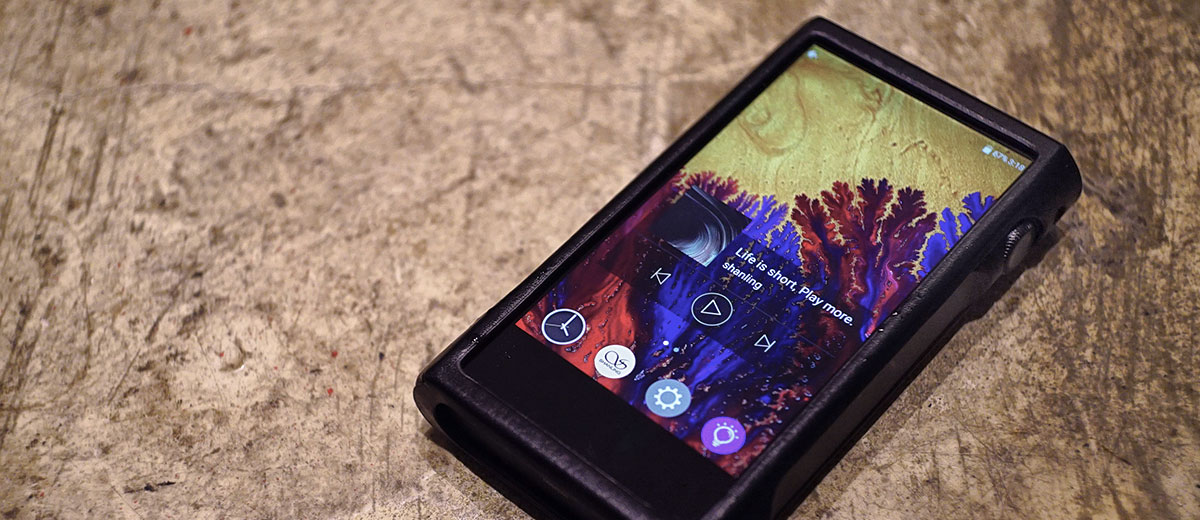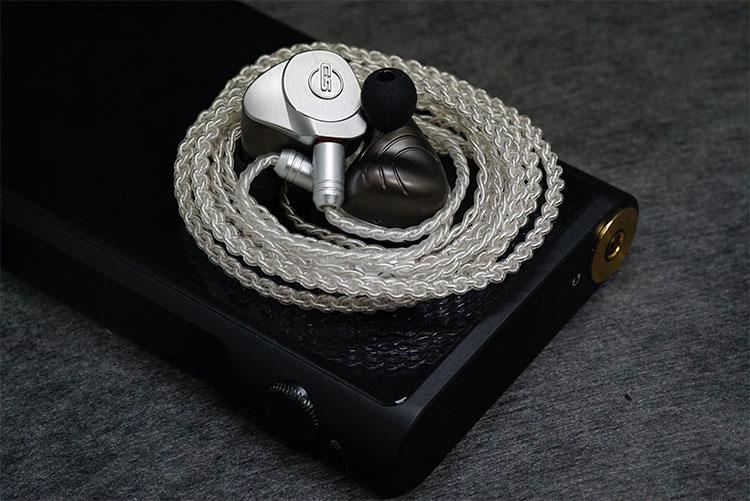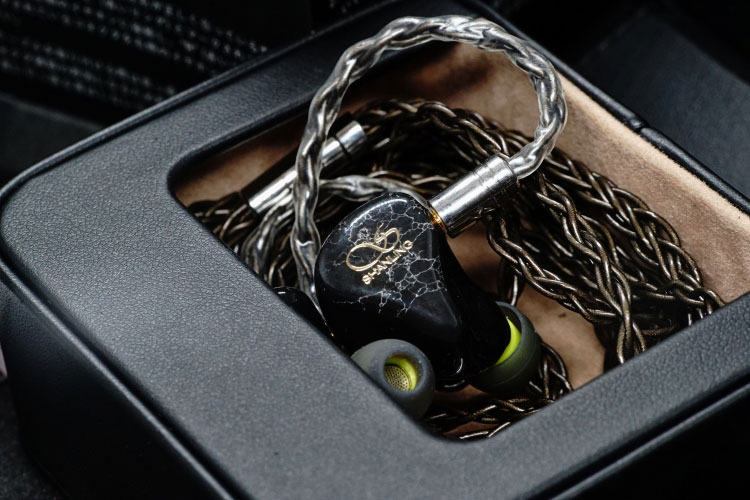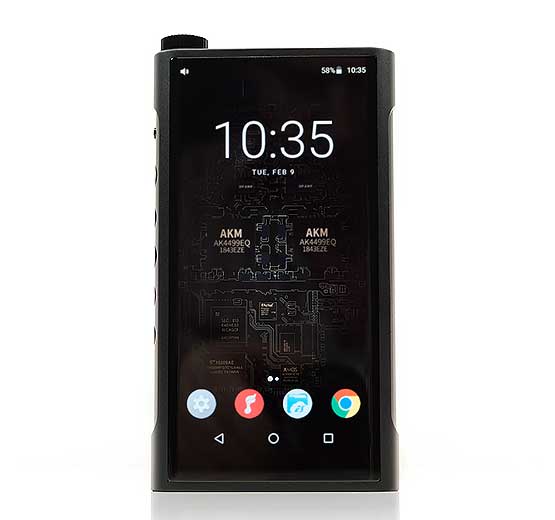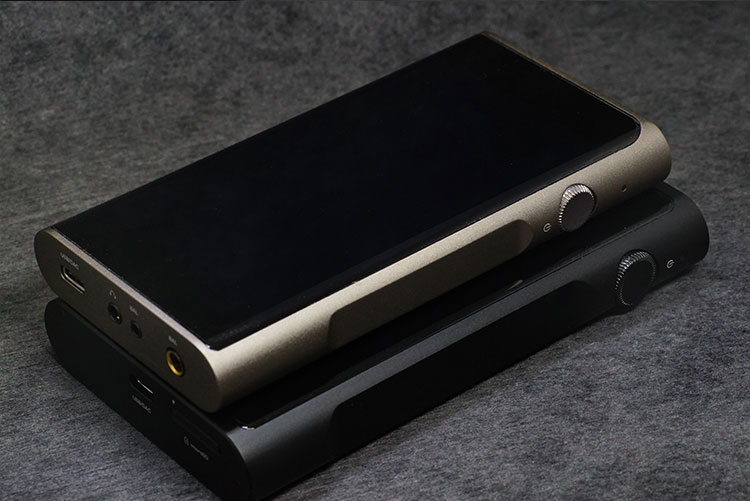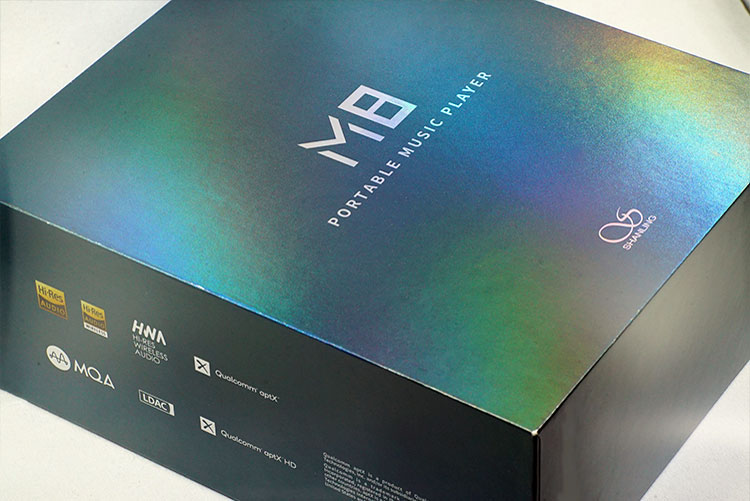Synergy
Efficiency
The warm and dense presentation with a lot of power gives it good synergy especially with IEMs that have a touch of brightness in the upper vocal range, also IEMs/ earbuds that has a dynamic driver in it.
With more power and control you get a better response. Some entry-level IEMs with quality drivers may respond to power and step up strongly, especially some higher impedance/damped single dynamic driver designs that need more current or swing to do them justice.
Pairings
Final A8000
The Final Audio A8000 is a very capable single DD IEM with a pure beryllium driver. It requires good power to drive and to scale up. I find it a great match with the M8 for grand, classical music and the combo complementing each other.
Both items have some similar qualities such as very densely textured mid-bass and delicately controlled treble. Together they sound extraordinarily rich and dense in the bass, highly textured while good energy is carried to the vocal and upper frequencies.
The staging is very spacious, and instruments are panned out like in a theatre. Articulation is super smooth such that you can hear 3D panning effects like with Dolby 3D at the cinema, enjoying how the sound disperse and sustain in midair.
This is a great combo for large ensembles or techno which involves a lot of fast-changing basslines in the mix. With vocal works, it is very clean and precise, perfect for opera works where you can hear the brilliance of the virtuoso.
The more you throw into this combo the more microdetail you will find. There is little sign of distortion even ramping up the volume. If you are into synth music the bass detail is truly excellent.
Earsonics STARK
The STARK from France is a contrasting IEM to the Final A8000 which has much more elevated bass and lifted around 1kHz. It needs good power and resolution from the player to shine and I like how it sounds on the M6 Pro for male vocals where the player helps to bring up more details in the upper mids to make it sound swift.
On the M8’s balanced output the STARK sounds quite expanded with a lot of bass power all the way from the subs to the lower mids. The vocal is slightly far positioned than the more intimate with its single-ended output.
For rock music or anything drumming intensive, it sounds much airier and expanded, revealing a lot of details for bass guitars where you could clearly hear the plucking and thumb pickings.
Turning to the medium gain or even the highest gain setting will take down the bass slightly but it will empower the vocal with more clarity. I actually prefer EQ-ing down to the 400-600hz region to enhance headroom for indoor listening and it is also great for some funky jazz.
With the M8 and the STARK, it makes a good combo for rock and club music as well as working great with YouTube videos also.
Shanling ME700
The ME700 is a test for power. The last time when we tested it with the M6 Pro they are a great match together.
On the M8 the ME700 is nicely driven on the highest gain but slightly more bassy. The bass impact is as agile as on the M6 Pro, but it is much more expanded in staging. The vocal is not as aggressive though it has excellent resolution and density. With the roll-off in treble vocals do sound a bit more rounded.
The vocal on M8 may not be standing out like on the M6 Pro but it is smoother, nicely controlled, well-articulated, and blends into the whole picture.
I prefer listening on the highest gain where the mids-treble range will be cleaner and bass will get firmer. This setup works best with classical music/chamber music and cantopop.
HUM Pristine
The HUM Pristine is a sensitive, linear, and fast responding IEM with very little coloration. Putting it on the M8 with the lowest gain, the mids on the pristine gets well-weighted, delivering a strong bass punch and more mid-bass detail from the mix.
Staging is more panned out with excellent 3D imaging and pinpoint positioning. Articulation is buttery smooth on this set with a clean upper vocal lift helping the singer to stand out more in the mix.
In fact, all fast and bass light IEMs will get a full-bodied treatment on the M8, warming up the mid-lows. This works for the ER4 series as well and adding weight to the vocal. The pairing is very enjoyable for outdoor listening or for neutral-sounding IEMs in general.
Power
The gain factor is clearly adjusted with the two lower gain options, (low and high), designed for sensitive/ demanding IEMs and the ‘highest gain’ for headphones.
Switching to max gain you will immediately hear the volume being jacked up. You will hear the bass line immediately being bolder and the swing stronger, extracting more treble detail at the same time.
Sennheiser HD800
Putting the HD800 on the balanced adapter I am surprised the M8 can actually drive it sounding quite full and textured in the bass, expansive in staging while keeping the vocal densely pronounced.
There is no squeaky sibilance and the mid-bass density on the M8 clearly gives it an advantage handling this 300Ω beast, keeping good control in the output, and does not sound veiled.
Overall, I am impressed with the pairing that could rival some small amps in terms of overall dynamics and timbre. It has the potential to replace weaker desktop systems as the pairing is not lacking in resolution and power in the lows at all and could be a great transportable alternative.
Audio Technica ATH AD2000X
When switching to other bass-light cans on SE output such as the ATH AD2000x the synergy is also great, vivid in sound, and very expanded with sufficient control and fullness.
The M8 is undoubtedly big in size but it does work as a transportable design that could satisfactorily serve as a source for various headphones.
Cans that are cleanly tuned in the vocals work even better but I just wish Shanling has a 6.3mm socket for the big cans or to put more power in the SE output!
Selected Comparisons
FiiO M15
Technical
The M15 and the M8 are targeting a similar price bracket, nevertheless the set of features and sound signature differs greatly.
The first difference you will notice putting them side by side is the screen. The FiiO M15 is using a 1440×720 screen with gorilla glass, versus the Full HD Sharp panel on the M8 that is higher in resolution and really sharper. It is obvious the M8 has a nicer screen but it is heftier than the M15.
The experience with the OS is, however, quite similar, with M15 being slightly stronger in specs and faster on some occasions. Both are extremely fast DAPs overall and works smoothly with different music apps.
You can notice the M15 getting hotter than the M8 after a few songs also. The lower temperature always helps the components to work better so this is one excellent area Shanling achieved by implementing the graphene heat sink layer.
Tuning
Jumping to the sound performance the M15 displays high clarity, resolution, and exceptionally clean vocal, a more modern “Hifi tuning” approach that is brighter.
In contrast, the M8 is emphasizing the midbass-bass area, which colors it warmer and more forward with darker voices, being more expressive and engaging with acoustic instruments and guitars.
Nasal tones are also more weighted on the M8 which brings out the character of singers like Bob Dylan and the chamber resonance on guitars and other string instruments. The vocal is still 3D and vivid but darker, thicker with more power than the M15 that colors the vocal brighter.
Playing “L’Inverno” from Vivaldi’s The Four Seasons and Mahler Symphony no.6, both devices are able to present a grand stage with swift articulation. A lot of micro details are captured and you can feel the M15 is trying to take away colorings, remaining very “calm” and controlled with fast and lighter impact in the bass.
M8 takes a different approach here and you can feel more texture and power when the bass rolls in. You can feel it even before the music starts when the musicians bow open string notes the resonance and harmonics which decays slowly into space.
The M15 swiftly presents the higher notes and every instrument is pushed further away thus delivering a more open stage. This works with IEMs that are not very well expanded in staging.
For the M8 it is generally warmer and easier to pick up instrument/vocals in the mid frequencies. The more protruding mid-bass keeps some elements more intimate while maintaining a wide, expanded stage.
Sony WM1a
Technical
I am asked how the M8 fares against the WM1a, so I am giving it a head to head comparison.
The two are both heavy DAPs and Sony does not use an open Android system but their own OS for the series. I have spent a lot of time with my WM1a and I really like how airy and soothing it sounds, though the lack of power is its weak point when the music demands faster and stronger punches. Still, the Sony works well magically with some Japanese vocal tracks.
There is some similarity in the two like how “calm” they sound instead of being fun but the M8 is two leagues up in terms of output power as well as having more OS flexibility.
Tuning
Putting the same tracks on both devices you will immediately notice the M8 being stronger in delivering deep punches and kicks. Being cleaner and more dynamic, the background is as dark and there is much more detail in the bass on the M8 than the WM1a.
Unlike the catchier vocal line on the M6 Pro, the M8 chooses a swifter, softer approach and makes it’s vocal even more polished, which has similarities to WM1a/WM1z’s treatment for vocals. With even better control, dynamics, and power in the lows the M8 sounds more energetic while keeping a sense of elegance. You will also feel more layering and density in M8’s bass.
Switching to more power-demanding IEMs like the A8000 you will hear a bigger difference with the M8 is giving it so much more air. The Sony is limited to smaller-scale music works and M8 is able to sound resolved, effortless when handling a lot more instruments in the mix, without pressing down treble detail.
Unless you only focus on Jpop/ Kpop the M8 will have a full advantage of listening to other genres especially Jazz and Classical music
M6 Pro
Tuning
The very first difference you will notice between the two is the level of staging, where individual instruments and vocal positioning is much more expanded on the M8 compared to the M6 Pro.
The harmonics are more noticeable on the M8 which makes electric guitar/synth work and club sound much more soothing than the M6 Pro’s cleaner approach.
In contrast, the M6 Pro sounds cleaner and more fun/energetic in the vocals but it couldn’t handle a larger ensemble like how the M8 performs so stably and with the ability to hit deep and powerful while stretching staging wide.
The M8 is, maintaining more delicate details in both the lows and the treble and you could even feel sound bouncing off from the music hall in good recordings. The M8 is also more balanced and linear in performance while offering higher resolution, power, and density especially in the mid-range, and is able to extract more details in the whole picture.
If you listen to vocal works during your daily commute the M6 Pro will probably be more suitable with its smaller size and vivid tuning, but if you are a classical music lover or prefer listening at home, the M8 has the power to retrieve much more from your music collection and let you immerse in rich, juicy details with a lot of control over the whole spectrum.
Power
While M8 offers higher output power, Shanling has fine-tuned the output on low and middle gain such that it could be more detailed than being too forceful. That is a caring move for sensitive IEMs and a larger dynamic range is preserved. You can feel much harder kicks and firmer attacks at the highest gain and with some IEMs that are less sensitive, this could be a good move.
Our Verdict
Shanling has always impressed me with their dedicated tuning and vocal performance which offers great power and weighted, full-bodied vocals on an extremely dark background.
From the soothing M6 to the vividly presented M6Pro Shanling proves their tuning expertise and hardware qualities, and once again they combine the merits in tuning with top-grade AK4499EQ decoding capability plus an amping circuit overhaul.
The result is a very well-polished, mature-sounding signature that has everything in place and is highly coherent. M8 has a look that is consistent with its sound design, achieving tranquility and serenity in and out with minimalistic topologies, sounding elegant, effortless, and expressive with dense and rich details, especially in the lower frequencies.
Music is part of my meditation and this is the kind of sound that is deep and calming for night-time listens. With distinct resolution, excellent headroom, a strong dense mid-bass character that does not compromise dynamics, the M8 is the most expressive DAP based I have heard so far.
As long as you do not mind the larger form factor, this is a solid recommendation for anyone who loves mega-rich bass details, soothing vocals, and grand staging.
Shanling M8 Specifications
- DAC: Dual AK4499 DAC Chipset
- USB solution: XMOS XU208
- PCM Decoding: up to 32Bit/768kHz
- DSD Decoding: up to DSD512 Native
- Amping structure: OP+BUF
- Bluetooth solution: Qualcomm CSR8675
- Output Power (Balanced): up to 840mW @ 32Ohm.
- Output Power (Single-ended): up to 260mW @32Ohm.
- MCU: Snapdragon 430 Chipset.
- RAM: 4GB
- Internal memory: 64GB
- Output jack: Interchangeable socket –
- 5mm SE, 4.4mm BAL, 2.5m BAL.
- Screen: 5” Full HD Display.
- WiFi Support: Dual Band 2.4GHz/5GHz with Synclink, DLNA, AirPlay Support.
- Battery size: 7000mAh, up to 14 Hours playback w/Quick Charge 3.0 Support.

